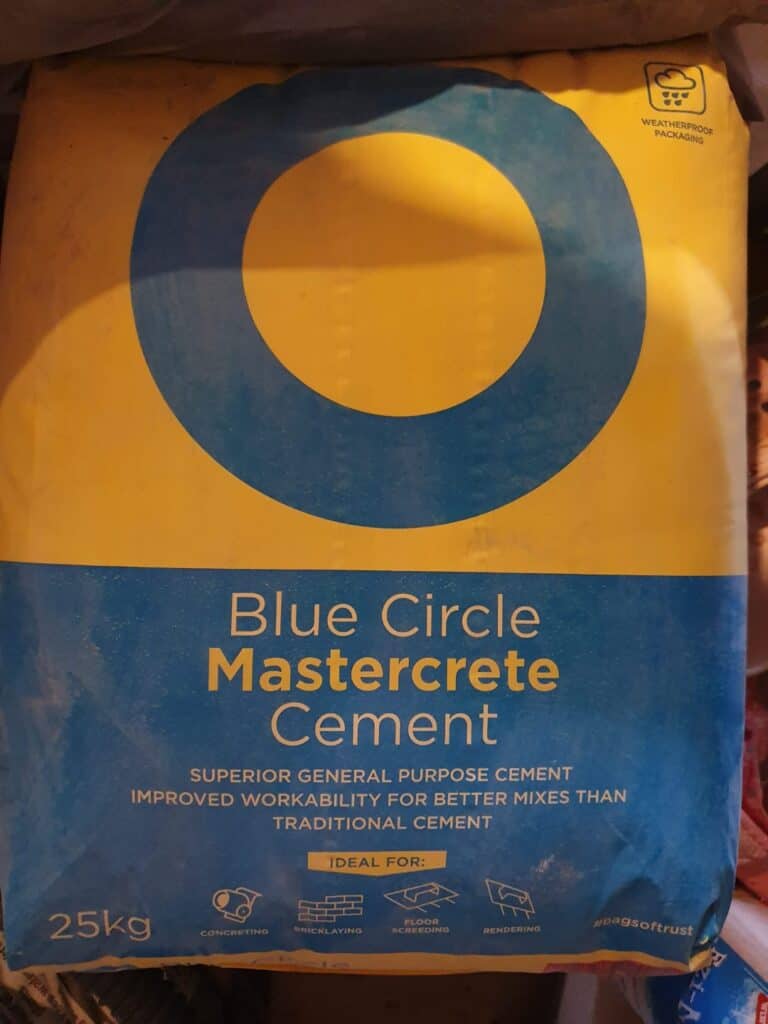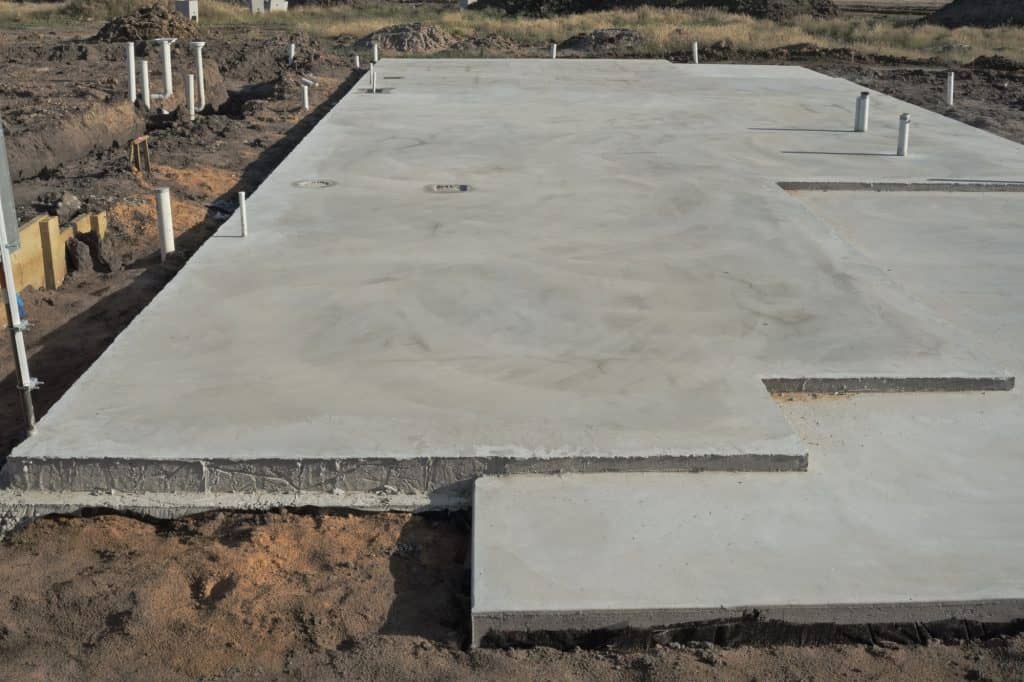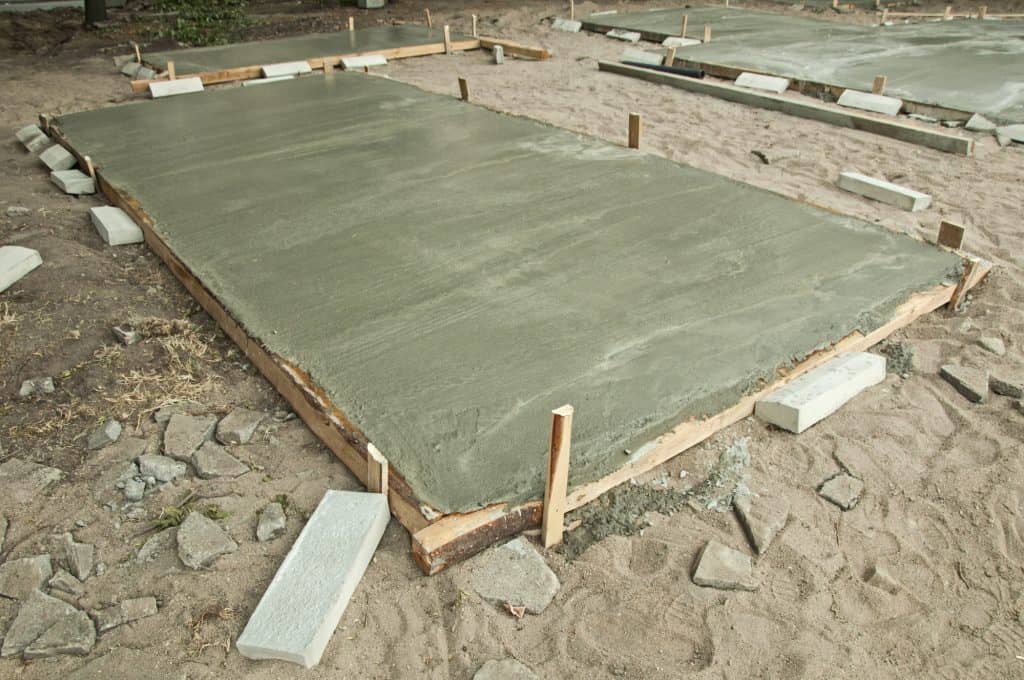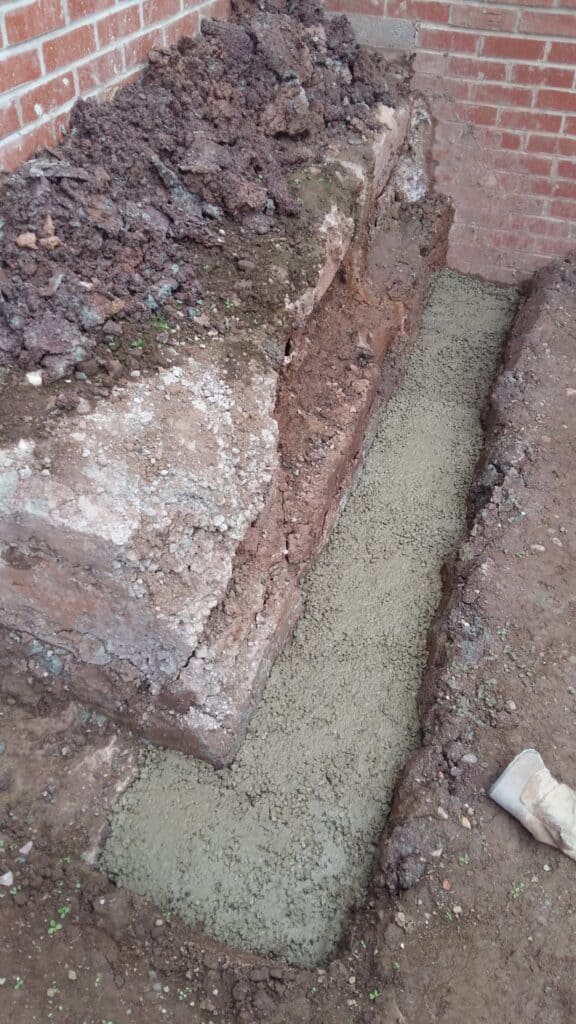There are a lot of people who are interested in laying a concrete slab for a driveway or as a foundation for a home. There are numerous advantages of using concrete including its durability and versatility. At the same time, if you want to take advantage of all of these benefits, then you need to make sure you give your concrete plenty of time to cure and dry before you use it.
So, how long do you need to wait before you are able to walk on a concrete slab? Even though this sounds like a relatively straightforward process, there are a number of factors in play. You need to perform a careful evaluation of these factors in order to protect your concrete slab.
Concrete Drying Versus Curing
First, it is important to understand that there is a significant difference between curing and drying. You need to understand both of these in order to effectively take care of your concrete.
Curing is something that takes place immediately after you pour your concrete. In general, concrete curing is going to take approximately one month to complete; however, your concrete is going to continue to harden even after four weeks.
After the curing process is complete, there is still going to be some moisture trapped in the concrete. Therefore, it is going to take a bit longer for concrete to dry completely. Fortunately, you do not need to wait for concrete to dry completely before you can use it. There are a number of factors that are going to play a role in how long concrete takes to dry. These same factors are going to impact when you can actually walk on concrete.
The Curing Process

Even though there are multiple types of concrete available, they all contain the same ingredients: these are water, aggregate, and cement. When you mix water and cement together, a chemical reaction takes place. All of the ingredients bind together. It is this mixing that causes concrete to harden. Then, during this process, the concrete will become porous.
Then, some of this water will become part of the concrete at self. If there is any water left over after this mixing process, it either evaporates or remains in the capillaries of the concrete. As the water begins to evaporate, the concrete itself is going to cure.
The Drying Process
The evaporation process takes place as water that is trapped deep in the pores of your concrete moved up to the surface. As this process takes place, more water is going to move up through the capillaries of the concrete toward the surface. Once the air that is above the concrete cannot hold any more water vapor, the drying process will stop. Because this process can take such a long time, it could take more than a month for your concrete to dry completely.
When Can You Walk on Concrete?

Even though you do not need to wait for the curing and drying processes to finish, you cannot walk on concrete immediately after it is poured. Otherwise, you are going to ruin the integrity of your concrete slab. In general, you need to stay off the concrete slab for at least 48 hours before you place anything on top of it. You may even need to put up barriers preventing items from falling on the concrete slab. Or, this is going to ruin the quality of the surface.
After approximately two days, you should be able to walk on the surface of your concrete slab. As you take a closer look at the concrete, you should try to stay away from the edges. The edges of the surface are going to take longer to dry completely than the areas in the middle. Furthermore, you need to be very careful with what you wear on your feet.
Even though it is fine to wear sneakers or sandals on the concrete surface, you do want to stay away from anything that can concentrate a significant amount of weight in a small area. For example, you certainly do not want to wear high heels on your concrete slab after only 48 hours of drying and curing. Otherwise, you could damage the surface.
Even though you can walk on your concrete slab after two days, this does not mean you can place heavy objects on it. For example, you do want to refrain from using any bikes, rollerblades, skateboards, or scooters for at least four or five days. Similar to high heels, the wheels that are on these vehicles are going to concentrate weight in a very small amount of space. This could lead to cracking in your concrete slab, ruining the integrity of the surface.
You need to be patient if you want to get the most out of your concrete surface. Fortunately, there are ways you can make this process go faster.
How Can You Speed Up the Drying Process?
It is going to be very difficult for you to keep everything off of your concrete slab for several days. Therefore, you may be interested in ways you can speed up the drying process. Before getting into these factors, it is important to take a closer look at some of the variables that are going to impact how long it takes concrete to dry.
A few important factors include:
- The Amount of Water: You need to take a close look at how much water you need to include with your concrete mixture. If you include more water than is absolutely necessary, this means it will take your concrete mixer more time to cure and dry.
- The Humidity: Remember that water is going to have to pass from the cement mixture into the air surrounding it. The only way this is going to happen is if the air is drier than the concrete itself. If the air is already relatively humid, it is going to take longer for the water to pass from the concrete into the air, lengthening the drying time.
- The Temperature: Finally, the temperature is also going to have an impact on how long it takes your concrete mixture to cure. If it is relatively cold outside, then it will take longer for concrete to cure.
Keep these factors in mind as you are trying to figure out if your concrete is dry or not. If you want this process to go as fast as possible, there are ways you can do that.
Options To Speed Up the Drying Time
If you are looking for ways to get your concrete to dry faster so you can walk on it sooner, there are several options at your disposal. A few options include:
- Add Calcium Chloride: You have probably heard of cement that dries quickly. You can do the same thing with your concrete by adding calcium chloride. Calcium chloride is a specific additive you can include in the mixture to help the mixture cure and dry faster. On the other hand, you do need to think about what you place on top of the concrete. Calcium chloride is extremely damaging to steel and rebar, so this additive not going to be an option if you are using these two structural components.
- Use a Dehumidifier: If you are pouring concrete inside of a building, then you may be able to use a dehumidifier for the air surrounding your concrete. This dehumidifier is going to suck water out of the air, making it drier. Therefore, it will be much easier for the water in your concrete slab to evaporate into the surrounding environment.
- Add a Heater: You may also want to add a heater if the environment is extremely cold. Even though space heaters are going to be relatively limited in what they can do to help you, they can still make some difference.
- Concrete Blankets: There are also insulated blankets you can use to warm up the concrete. These blankets are specifically designed to speed up the healing process, particularly if the weather is very cold or wet. These are very important if you are pouring concrete outside. That way, you can protect your concrete from the elements.
These are a few of the options you have available if you are looking for ways to get your concrete to dry faster. After you have poured your concrete, it is also important to be familiar with a few do’s and dont’s to protect your work.
Take Care of Your Concrete Appropriately

It is important for you to protect your concrete after you have poured it. A few important steps you need to take include:
- Use Water Correctly: First, you should always spray new concrete with water after you put it down. For the first seven days after laying your concrete, you could spray it between five and 10 times per day. If you want your concrete to be as strong as possible, then you could spray it with water; however, if the weather is cold outside, do not spray it with water as this will damage it.
- Cover Your Concrete: You need to make sure you cover your concrete. This is particularly important if you are not going to be spraying your concrete with water. There are specific sheets that are available to protect your concrete from harm. If you keep your concrete covered for several days after you have poured it, this can make a significant difference in the quality of the final product.
- Apply a Curing Compound: Finally, you may also want to use a curing compound. These are soluble emotions that immediately create a protective film on top of your concrete when you spray them on the surface. That way, your concrete will cure at a consistent rate. This is incredibly important for making sure your concrete is as strong as possible. You may want to take a look at a few options and figure out which one is best for your project.
At the same time, there are a few mistakes you need to avoid if you are taking care of your concrete as well. A few examples include:
- Do Not Skip the Control Joints: You need to make sure you produce a high-quality product that is resistant to cracking. Even though you would probably like to complete the process as quickly as possible, do not skip your control joints. Make sure you place them and predetermined locations to prevent your concrete and cracking. Cut them about a quarter of the depth into the concrete slab at the beginning of the curing process.
- Do Not Let Your Concrete Get Cold: If you want to protect your concrete from cracking, you need to make sure it does not get too cold. The temperature should remain above 50 degrees Fahrenheit for 5 to 7 days after pouring concrete. If you are concerned it is going to get too cold, use a warming blanket.
- Do Not Paint Your Concrete Immediately: Even though you might be able to walk on your concrete within a few days, this doesn’t mean it is time for you to paint or stain it. In general, you should wait at least one month before you try to paint or stain your concrete. Otherwise, you will put pressure on the concrete, causing your paint to peel away from the surface.
You should keep all of these points in mind as you are trying to get the most out of your concrete slab. Remember that if you have questions or concerns, you should reach out to professionals who can help you.
Frequently Asked Questions About Taking Care of Concrete
There are a few common questions people have when it comes to a concrete slab. A few examples include:
As the concrete goes through the curing process, you may notice that it starts to change colors. It can take up to two months for your concrete to cure completely. As a result, there may be different amounts of moisture and different parts of your concrete slab. This could cause a spotty appearance that gives the appearance of discoloration. It will resolve with time.
There are multiple reasons why your concrete might be starting to crack; however, all concrete is going to crack eventually. Keep in mind that hairline cracks are not going to impact the structural integrity of your slab. If your concrete is cracking as soon as you lay it, there may be rapid temperature or moisture changes that are impacting the integrity of the surface.
Fortunately, there is not a lot of maintenance you have to do to take care of your concrete. The most important thing you have to do is be patient before you walk or drive on it. Then, you should make sure you wash your concrete regularly. That way, you can prevent mold or mildew from building up on the surface of your concrete. This will keep it aesthetically pleasing in addition to protecting it against any structural issues that might be present.
